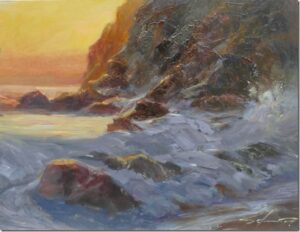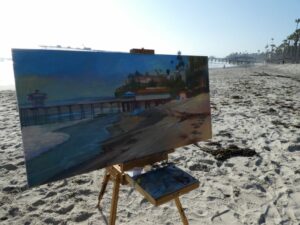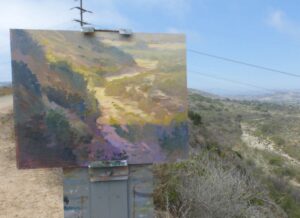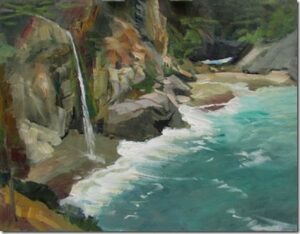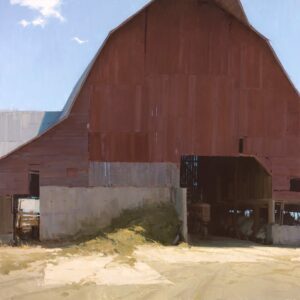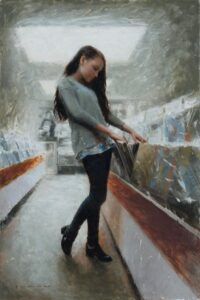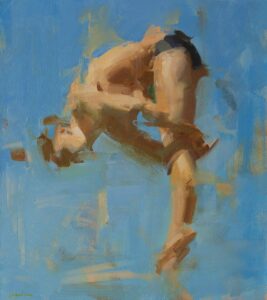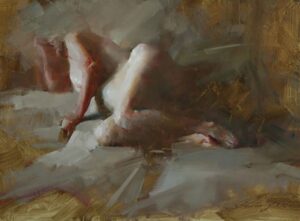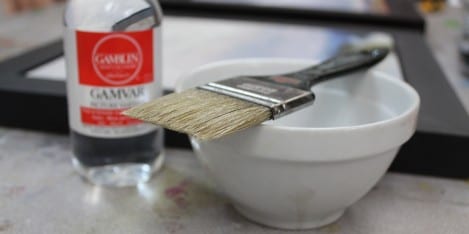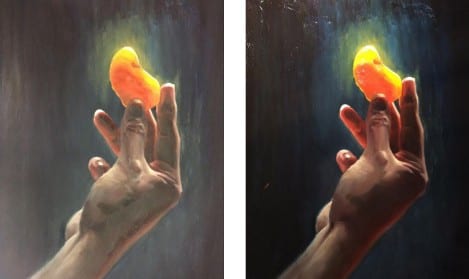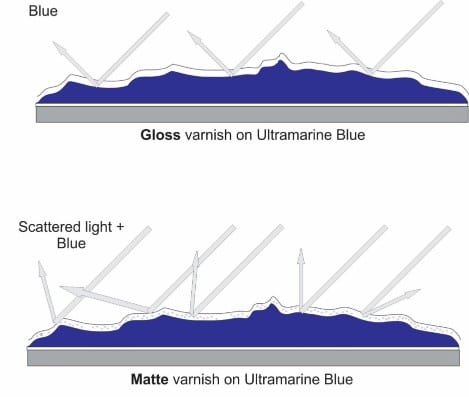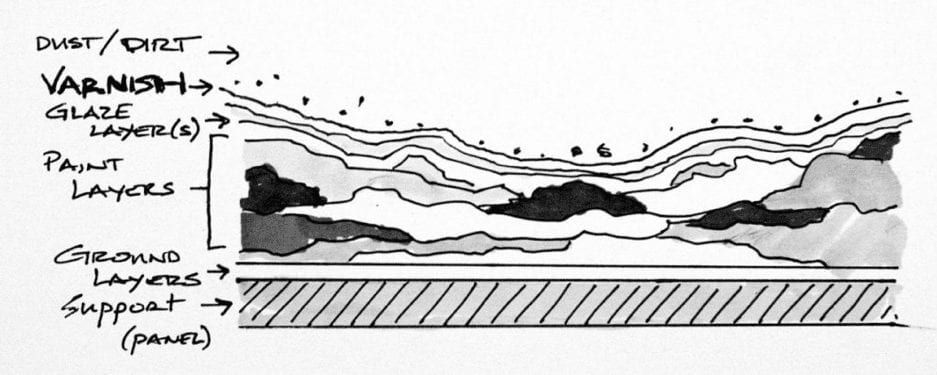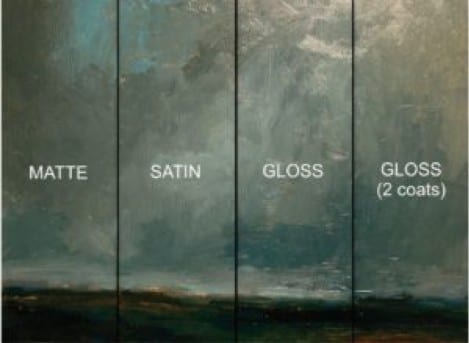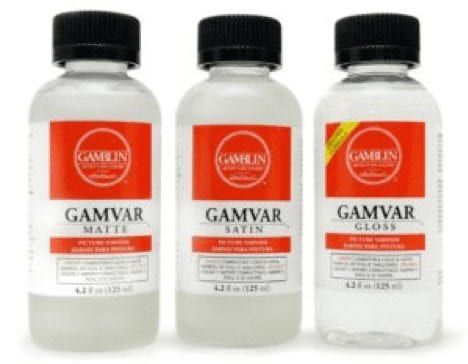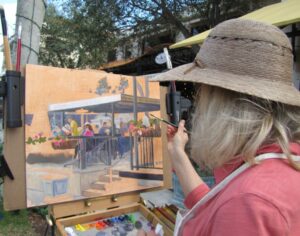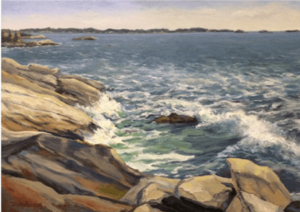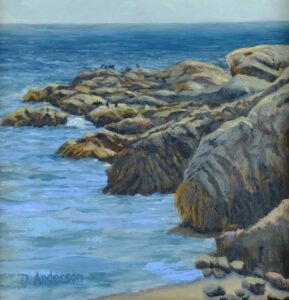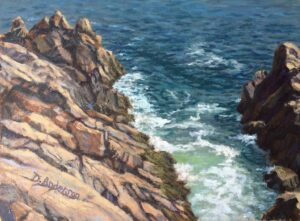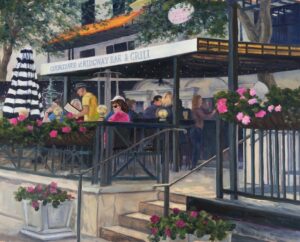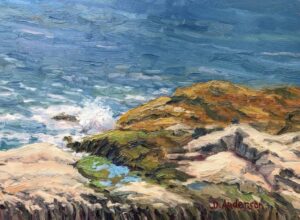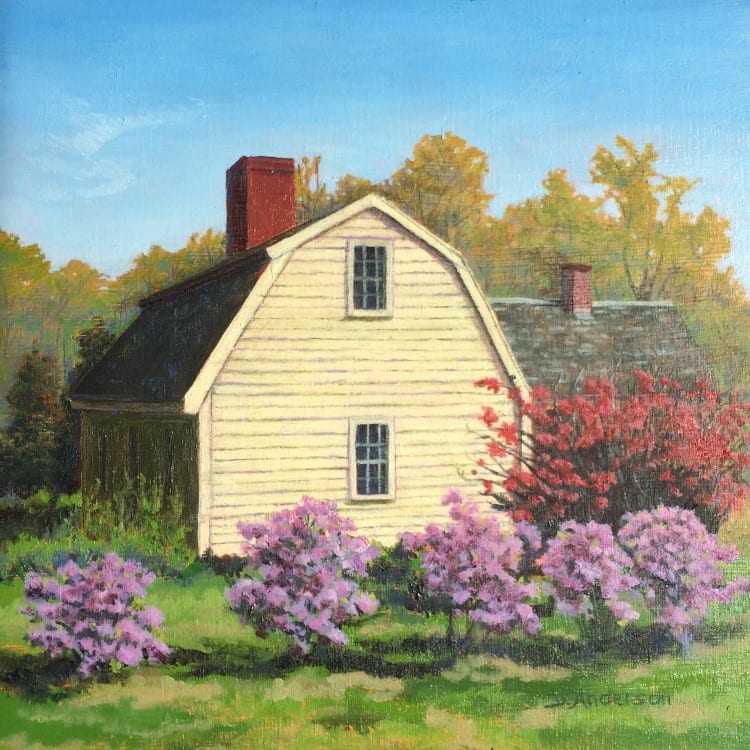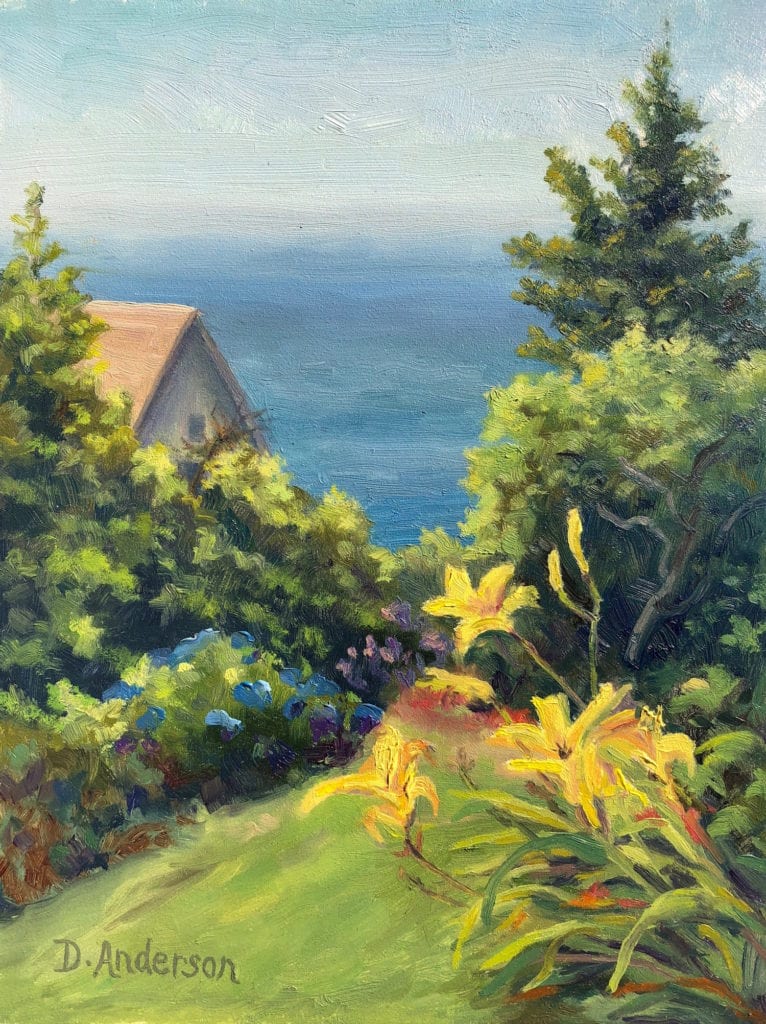
Pastel – 12″x 18″
Do you ever find yourself wondering what’s important in your painting and what is secondary?
I remember when I was younger and not clear about this, (what was of primary importance and what to do about it). This confusion caused me to over-work a number of works, as I tried to get everything I could into a painting. It was a sickening feeling, when I sensed at first I had something and then suddenly I didn’t. And I was blind as to what had happened to the painting!
As I look back I think it was because I hadn’t realized what was important and what was not important. I worked and reworked without clarity, weakening what I had or even losing it completely. This problem plagued me for a few years until finally, I figured out how I could deal with it. This is my personal approach to that problem:

By Albert Handell
Pastel – 24″x 18″
Painted on dark sanded paper from life in one sitting. There is no backgrounded painted, it is a vignette. What could I have possibly done to the background to make this portrait more beautiful, more striking? Nothing! The freshness of the vignette is an important part of the whole pastel.
I was taught, I had to paint from edge to edge before I could even consider the painting a painting and also not to get into any specific part of the painting beforehand. This idea for a painting is valid in its own way, but for me only to a limited degree. I felt for me that too much concern about everything else kept me from a certain amount of intimacy or focus for the area(s) of the painting that had originally thrilled me to start the painting in the first place.
I decided to try Vignettes and not paint from edge to edge. Vignettes basically mean just painting the area that interests one, and leaving the rest of the paper or canvas untouched. It also meant forgetting about the concern if others would consider it a study, or a sketch, or worthless. Since I was painting daily I was able to experiment with a number of works to explore this idea.
Something interesting about Vignettes
It seems that if I painted a vignette on a toned ground, it was more acceptable as a painting than when I painted the same vignette on a white ground.
Then what about the portraits I painted with oils or pastel on a pre-toned surface? Since there are no actually painted backgrounds, these portraits were vignettes, yes? Yet they are accepted as finished paintings.
This made sense for portraiture, but what about the landscape?

As I was painting mostly with pastel on location, I decided to start the pastel with a watercolor under painting. These transparent watercolor washes added an unexpected texture and contrast to the “backgrounds”. Watercolors also have what is referred to as “watercolor accidents” which if not tampered with are quite beautiful in their own way.
Then with my pastels I just focused in on the area(s) I wanted to paint, had to paint, and painted them. This was very direct and clear to me as to what was important. The unimportant area(s), in order to give the pastel breathing space, I basically left alone or it would be painted with just a minimum of detail or the suggestion of detail. Or left alone completely leaving the w
For my oils…
I have always mentioned in my workshops: “the nice thing about oils is that they are wet, and the problem with oils is that they are wet.” What to do?
I start my oils, which are mostly painted in the studio and are larger than my on location pastels. My paint medium is fast drying Gamsol. My initial transparent color washes are applied and scrubbed on with a sense of abandon, very much like my watercolors for my pastels. Dark areas will have dark transparent colors varying from warm to cool tones. The lighter areas will have lighter tones applied again considering only where the warmer or cooler tones are located.
Then, painting from the center of interest out, painting the areas that I wish to focus on which is basically the important area(s) which by themselves made up a vignette, then letting the other areas simply “drop off” so to say, or simply painting them with much less emphasis or detail. I also found these untouched, unfinished areas are perfect for a signature, which finishes the painting.

Untitled
By Albert Handell
Pastel – 12″x 18″
